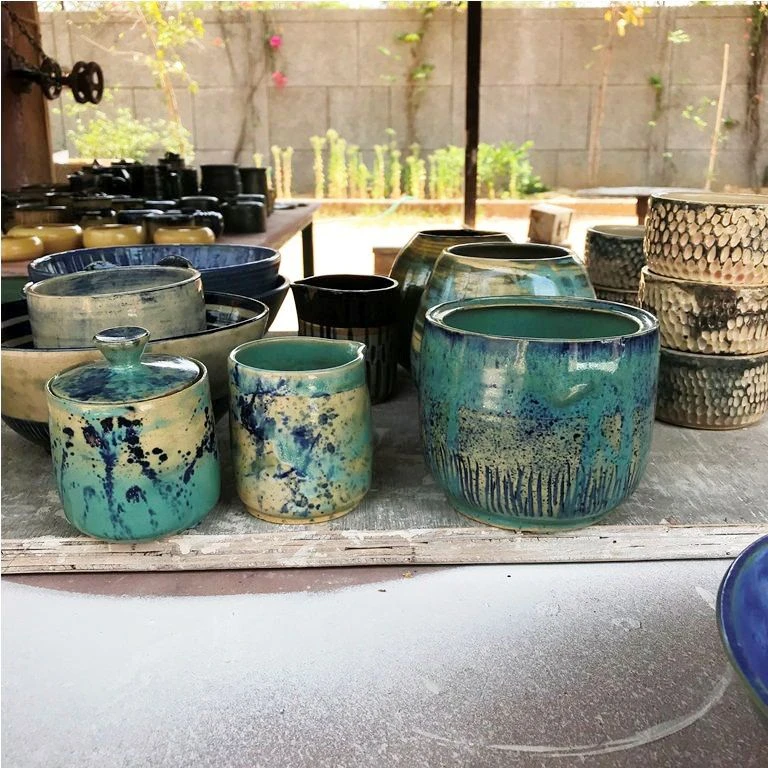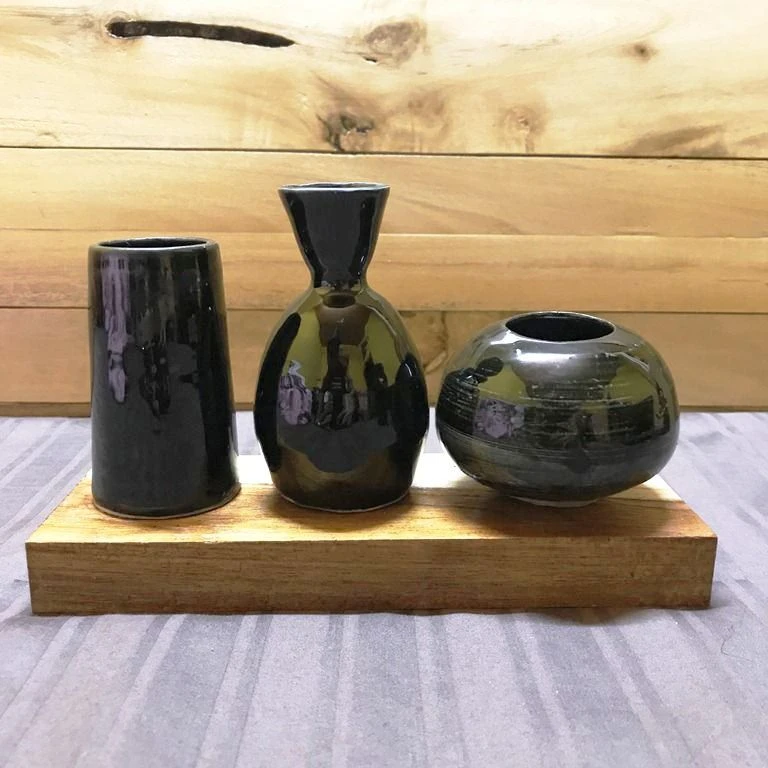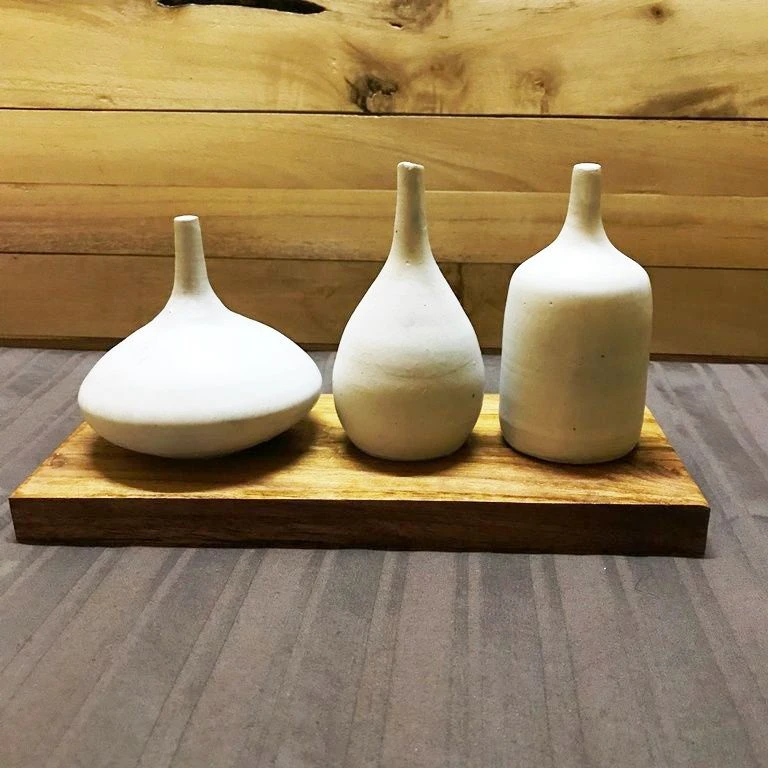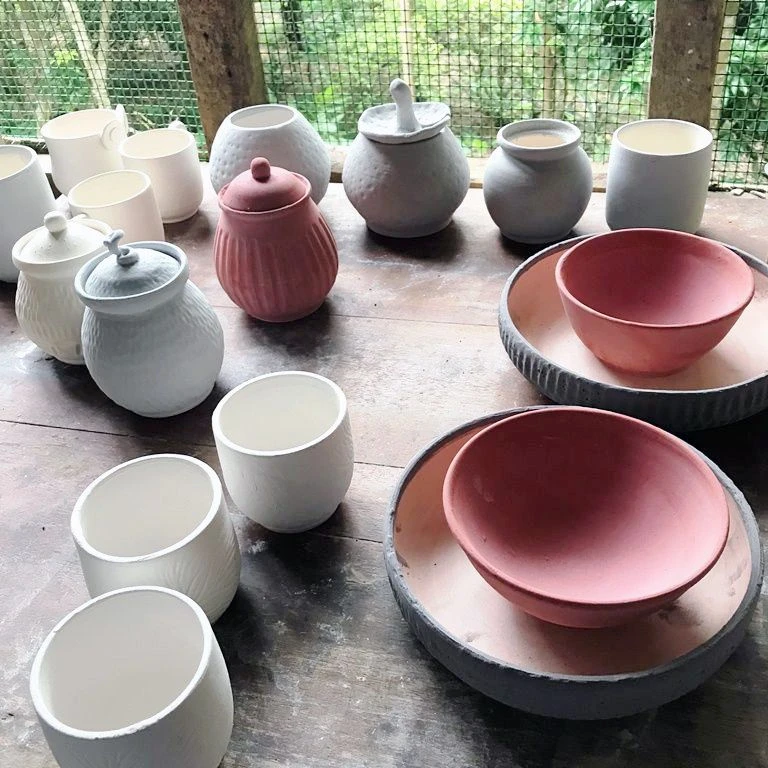Potter Lipok Esther of ‘Fire & Earth Ceramics by Lipok Esther’ and her creations.
Vishü Rita Krocha
Kohima | August 19
“Pottery has long been associated with our ancestors and we have seen it in our daily lives since we were young. However, it has come to a stage where we see it as a utility product that is still being made by the older folks in our community in the villages.” These are the words of potter, Lipok Esther, who firmly believes that art of any form has to be representational where one looks at your work and understands the soul of the artist and the character that the piece holds.
“When the rest of the world is finding ways to live more organically, we shouldn’t let an art form, which exist, be extinguished,” is what she strongly feels while putting across that, “We have to be the bearers of the positive aspect of our culture and tradition and build bridges to let our traditional legacy live on.”
Lipok Esther started working straight out of college and did her post-graduation as a regular student while working her third job as a wealth management analyst with Global Market Operation at Bank of America. Consequently, she worked as a Senior Public Relations executive with Hong Kong Tourism Board during 2016 before deciding to come back home.

“It was almost a year after I got back to Nagaland that the idea of pottery played again in my head because opportunity here was as rare as the sighting of a Hornbill,” she says. She had initially considered learning pottery as a therapy to get away from corporate life but as her interest grew, she went back to Delhi to undergo formal training as a potter and completed a year’s intensive course.
“Our ancestral Naga potters are also one of the main reasons why I had to come back to share what I have learned,” she puts across while commending the artists who are practicing pottery the traditional way. “I hope that one day I will be able to recreate what they do in a more refined and polished manner without taking away its aesthetic and ethnic value. I hope that there will be more artists so that the rest of the world will see our work and want to come to our region to learn from us.”

It was only when she started training to learn pottery that her whole perspective on ceramic pottery changed – from it being mundane and easy peasy to truly an art form. Describing her journey in this regard as one of the most spiritual experiences, she shares that she also grew attached with every piece that she created, more so with the realization that every piece of work was an extension of her and that she was giving life and character to every piece created.
She further enlightens that there are many stages that clay has to go through before it can claim to be a ceramic pot. “It is a one sided love affair and is like a tedious, time consuming, demanding and possessive lover that you simply can’t ignore. You simply find yourself obsessing and admiring the beauty that is of a complete piece after glaze firing,” she elaborates.
In her words, there is so much Physics and Chemistry involved with pottery, and she has had her own share of challenges but has clearly overcome them with sheer passion and perseverance.
Lipok Esther has attended and participated in numerous exhibitions to enhance her learning curve and has another exhibition coming up in December called the Potter’s Haat, an exhibition which happens annually. She has also just recently set up a home based studio called ‘Fire & Earth Ceramics by Lipok Esther’ and will soon start classes in Dimapur at Fire & Earth Ceramics from September 15, 2018 onwards.

For registration, one may contact her by email – lipok.esther@gmail.com, through the Fire & Earth Instagram account – lipok_esther or by phone at 9711993022 for more information. On any given day, you would see her covered in clay and looking all happy about it. It is a messy affair as she says, but she hopes that this affair will see her through both as an artist as well as a way to create an income opportunity.
“I have just completed my first Bisque firing and am overwhelmed by the fact that this is really happening here in Nagaland,” she states.
She firmly believes that Naga people are aesthetically blessed and very artistically inclined. However expressing concern on their tendency to replicate other people’s work at the light of speed, she cites that the lack of exposure could be the reason.

“Something or anything new is in fad and give it a couple of months or six months tops and it is out. I am genuinely still apprehensive about how this endeavour will pan out but I am very hopeful and very soon I hope to be able to share what I have learned with our people here,” she adds.






